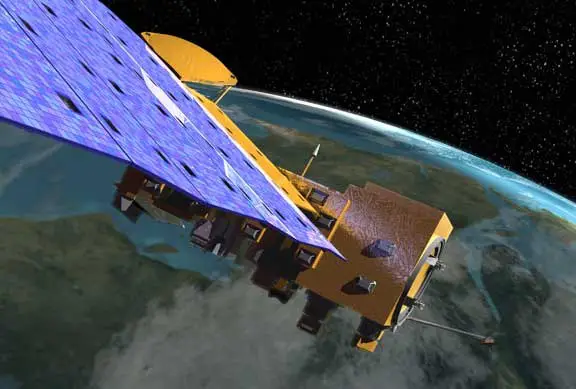The three most important greenhouse gases present in the atmosphere are nitrous oxide, methane, and carbon dioxide. While most of us have heard that carbon dioxide is an important greenhouse gas, nitrous oxide and methane have more significant global warming potential (GWP). While nitrous oxide has a GWP of 298 for 100 years, methane has a GWP of 25.

In most developed nations, carbon dioxide is essential in global climate change. The emission of carbon dioxide mostly comes from industrial processes and energy production. The only exception is New Zealand, whose emissions come from agriculture.
Collecting data and making observations regarding the levels of greenhouse gases is essential. With the help of this information, you will be able to understand whether you need to take action to reduce greenhouse gases. This article will discuss spacecraft bus platforms that aid in monitoring greenhouse gases from space.
What Is a Spacecraft Bus?
Along with tech, I am a big space enthusiast, and I love to explore about space and related stuff. During my study, I found about spacecraft buses, and thus, I thought to share a few things about it.
Before we get into the main gist of this article, let us first understand what is a spacecraft bus. Spacecraft buses, or satellite buses, are the body of a satellite. This particular technology contains all the satellite’s scientific equipment and other vital components. Since scientists will send communications and scientific components into space, these buses have to be robust so that the equipment can reach space without damage.
How Could Space Buses be Used for Greenhouse Gas Observation?
Based on my study, there is only one satellite that is being used for monitoring greenhouse gases. This satellite is known as the Greenhouse Gases Observation Satellite or GOSAT, and it is also known as Ibuki, a Japanese word for Breath. It’s the first Earth Observation satellite dedicated only to observing greenhouse gases.
Ibuki can circle the Earth in roughly 100 minutes at an average altitude of 667kms. It allows the satellite to cover the entire surface of Earth, which will enable it to monitor the presence of emissions better and with unprecedented accuracy.
This particular spacecraft bus measures the densities of methane and carbon dioxide from roughly 56,000 locations worldwide. This craft was developed by JAXA (Japan Aerospace Exploration Agency) and was launched in 2009. The data Ibuki provides is used by NIES (National Institute for Environmental Studies) and Japan’s Ministry of the Environment to track such emissions. The information is also shared with other international scientific organizations, like NASA.
According to the information provided by JAXA, this space bus is fitted with a wide range of instruments to measure greenhouse gases in the atmosphere. Since it is for satellite monitoring of greenhouse gases, the spacecraft bus is equipped with TANSO-FTS, a greenhouse gas observation sensor. This sensor can observe a wide range of wavelengths, like thermal infrared and near-infrared regions, enhancing the accuracy of the observation.
Additionally, most satellites that monitor greenhouse gases, like Ibuki, are fitted with a specialized spectrometer that can measure various compounds and elements based on how they respond to different types of lights. This particular technology is often used to measure the concentration of emissions in the upper atmosphere; the images are of exceptionally high resolution.
Observations from the Ibuki can detect other problems, like methane leakage from natural gas pipelines. Based on studies, it has been found that leakages in these pipes cause nearly 1.5% of the total global warming. The GOSAT can find any leaks within an area of a 10-km radius.
In 2018, the GOSAT-2, or the Ibuki-2 was launched from the Tanegashima Space Center.
Why Is It Important To Measure Greenhouse Gases?

Most people ask whether there are any benefits of monitoring greenhouse gases. Yes, measuring greenhouse gases is very important. Some reasons why you should measure greenhouse gases in the atmosphere include:
1. Prevention of Global Warming
Above the Netherlands, the concentrations are rising. Such a rise in greenhouse gases can lead to global warming, which contributes to various climatic problems, like rising sea levels. Measurements in various remote locations only show the rising levels of the gases. For instance, data shows rising gas plumes around the Netherlands.
With the help of these data from space buses, you will be provided insights into understanding what types of human activities lead to an increased concentration of greenhouse emissions. These measurements are essential to understanding the effects of greenhouse gases and the ways to counteract them.
2. Decreasing Carbon Footprint
With the help of data provided by spacecraft buses for monitoring greenhouse gases, you will be able to map out the quantities. This will help you understand whether the emissions are under the set limit. Moreover, the data can help emission-reducing companies reduce their carbon footprint.
Final Thoughts
So, can we monitor greenhouse gases via satellites? The improvements and advancements in satellites and space buses have transformed our ability to observe the state of our planet. Since the launch of the first Earth Observation satellites in the 1960s, the way we understand the Earth and its critical systems have improved significantly. With the help of these satellites and space buses, we can now measure the presence of greenhouse gases on Earth and develop effective solutions to deal with such issues.







Add Comment